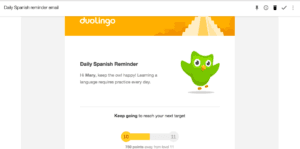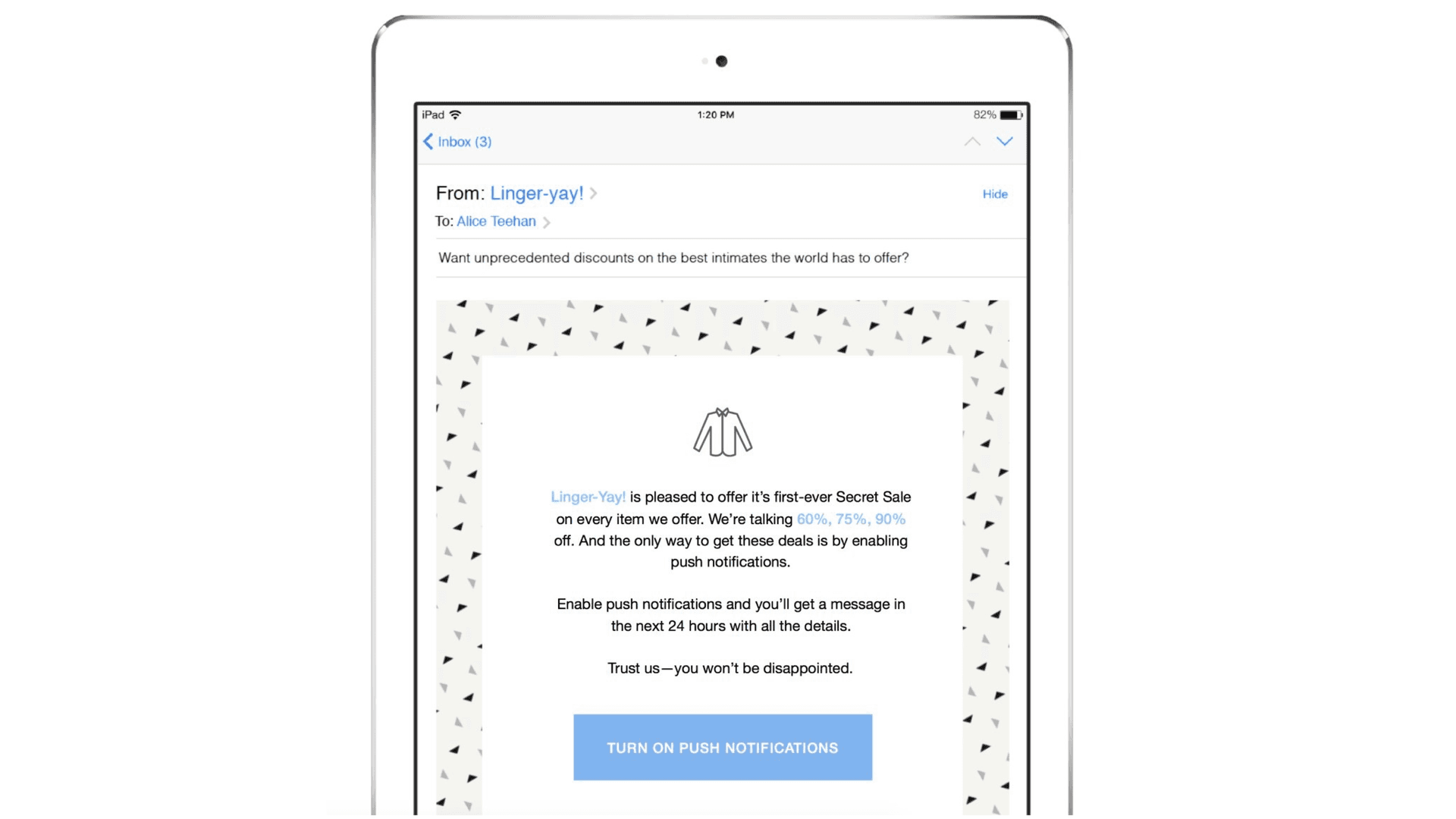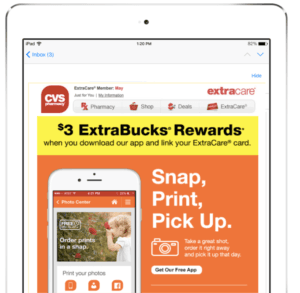Active Customer Campaigns: 5 Things Marketers Need to Know
Published on March 15, 2017/Last edited on March 15, 2017/6 min read


Mary Kearl
WriterFor marketers, knowing your customers can be a powerful asset. Customer data makes it possible to know which kinds of notifications each customer likes best, as well as the app or website features they spend the most time using, what motivates them to take action, and a lot more. With those insights, you can use audience segmentation to send campaigns that will resonate with specific subsets of your user audience, potentially increasing conversions by up to 200%.
Common segments that marketers target for campaigns include new customers, lapsing customers, shoppers who’ve abandoned their carts before completing a purchase, and brand advocates. Another key group that’s often overlooked? Customers who are using your brand’s website or app on a regular basis. By taking advantage of active customer campaigns, brands can deepen these users’ brand loyalty and encourage more frequent conversions over the long haul.
1. What are active customer campaigns?
Because of all the ways mobile has impacted customer behavior and interaction with brands—and, on the flipside, all the ways it has enabled marketers to reach and communicate with individuals in custom ways—today’s customer journey is nonlinear. App users can and do bounce between the four main stages of customer engagement, moving from lapsing to inactive and sometimes (if your re-engagement game is strong) all the way to active and loyal, and back and forth again. That’s the new normal.
What does that means for marketers? Well, that active customers (the ones who regularly interact with your company’s app, website, or marketing campaigns) may not stick around. Or, for a different perspective, the optimist’s view: they’ll stick around as long as there are good reasons to—and that’s where active customer campaigns come in.
By sending active customer campaigns, you’re helping to cultivate the good habits these active customers have already established:
- Making the most of a brand’s app or website—and even playing around with some of the lesser known features
- Allowing and engaging with push notifications
- Being active email subscribers who take the time to open and poke around email campaigns
- Making regular purchases, signing up for subscription services or tiers, or other activities supporting your monetization efforts
2. How do active customer campaigns work?
In general, these campaigns support one of two possible objectives:
- Convincing active users to stick around, supporting higher retention rates over the long term
- Encouraging these active customers to engage more frequently and deeply with your brand, so they become loyal customers (and potentially brand evangelists)
You’ve probably received some of these messages in your day to day life. Active customer campaigns can include push or email reminders to check out new updates within one of the social networks you use, or perhaps celebratory updates from fitness (or gaming or learning) apps about achievements that encourage you to keep up the good work. If they’re doing their job right, these sort of messages can inspire you to keep up your engagement ritual with a given brand and potentially nudge you to deepen your involvement with their app or website.

3.Which channels make sense for active customer campaigns?
Each of the four main messaging channels—push notifications, in-app messages, email, and News Feed Cards—offer powerful ways to connect with active customers, depending on how they’re currently engaging with your brand. Here’s how to make the most of each for reaching active customers:
- Push notifications:
- Pros: You can reach active web, mobile, and wearables users even when they’re not engaging with your website, app, or wearable, making this an effective way to convey urgent or time-sensitive information.
- Cons: If customers are active on your app or website, but haven’t enabled push, you can’t send them these notifications. (You could, however, consider using a targeted re-permission campaign to get this specific segment of users to opt back into receiving push notifications from you.)

- In-app or in-browser messages:
- Pros: This messaging channel exclusively reaches users while they’re active on your website or in your app and can support rich content, including images and GIFs, making it a great way to engage active users.
- Cons: If an active customer is only active on one of the platforms you support (for instance, viewing your website regularly but never using your app) only messages that are targeted to that platform will reach them, making it important to have a multi-platform strategy in place.

- Email:
- Pros: While it’s the oldest digital marketing communications channel, email is still one of the most effective. And because the vast majority of people already have email addresses, this channel can be powerful tool for encouraging active users to download your mobile app, the way CVS does in their active customer outreach aimed at its loyalty program members.
- Cons: Just because an active customer has an email address doesn’t mean that you’ll necessarily be able to reach them using this messaging channel—they may have unsubscribed from your email list, never signed up in the first place, or started tuning out your messages in this channel.. Over-emailing customers can also start to trigger spam complaints and lead to increased unsubscribe rates.
- News Feed Cards:
- Pros: These dynamic messages support rich content, reach users within your app or website, and last for as long as you want—and you don’t have to get customers to opt in to see them.
- Cons: Like in-app and in-browser messaging, these unique communications can only be seen by customers when they are active within your website or app, and can go unseen if a customer is only engaging on platforms that don’t support this channel.
Want to think best practice? Establish a multichannel strategy—having such a holistic approach has been found to increase retention rates by 130%. Plus, taking advantage of multiple messaging channels will help ensure you reach active customers even if they’re only engaging with some of your brand’s platforms.
4. What does a great active customer campaign actually look like?
Want to see some more examples of effective active customer campaigns? Check out seven top-flight campaigns from LinkedIn, Snapchat, WordPress, and others that do an impressive job motivating active customers to stay engaged.
Related Tags
Be Absolutely Engaging.™
Sign up for regular updates from Braze.
Related Content
View the Blog
The new inbox reality: How iOS changes are reshaping email marketing

Aparna Prasad

Experience optimization: Turning data insights into better journeys

Team Braze

December 2025 Bonfire Marketer of the Month: Jagex’s Emma Oliver
